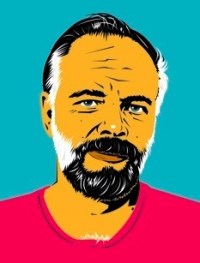
I blame the terrorists. The movement to create national identity cards was given fuel by the attacks of 9/11 and the subsequent formation of the Department of Homeland Security. The “concept” is that by issuing government sponsored official identity documentation we would introduce a control point in the process of differentiating “us” from “them.” There is a lively debate about whether such a system could be spoofed to somehow allow “them” to acquire identity cards and pass themselves off as authentically one of “us.” There’s no question that such an identity card would create a glaring single point of failure– the program meant to get the ball rolling is called the Real ID Act.
Personal identity is the sameness of a same person in different moments in time.
A simple frame for understanding the potential problems with the proposal requires focusing on the idea of the One and the Many. (those seeking extra credit can explore Hegel vs. Locke and review the STI’s white paper on Digital identity.) Can one national root identity be made strong and authoritative enough to be the foundation for all digital identity instances? In the future, will you have a single root identity provisioned by your government? Will you co-own your identity with your government, or will they have a 51% controlling interest when it comes to anything important?
Digital Identity is a man-made thing, an artifact, that refers to a person, and is different from a person.
An alternative vision is based on user-centric ownership and assertion of identity. The claims an individual makes to establish her identity and reputation are validated by many different sources, both strong and weak. Rather than a single root, the foundation is rhizomatic, or a mesh of validated relationships and reputation. A government issued identity card can, and does, have a role in the mesh — the question is whether it should be authoritative or simply continue to contribute to the whole.
Yes, but how does an Identity Mesh help us fight the terrorists? Well, no one thing will be a silver bullet. But you could argue that assembling a complete meshed identity across multiple active relationships would be more difficult than compromising a single authoritative root identity. The conversation about personhood and identity systems is taking place in the context of Homeland Security. The unintended consequences of selecting this tactic to enhance our national security are vast. Ask George Orwell.
As we discuss how to mesh together identity across social networks there’s a shadow falling from overhead. While the concept of a metaverse doesn’t seem in the offing, we are starting to create an augmented reality through the combination of these services. Identity will be at the foundation and creating that foundation will be a political process not a technical one. In fact, the political must limit the technical if we are to preserve the inalienable rights of our democracy.
One Comment


